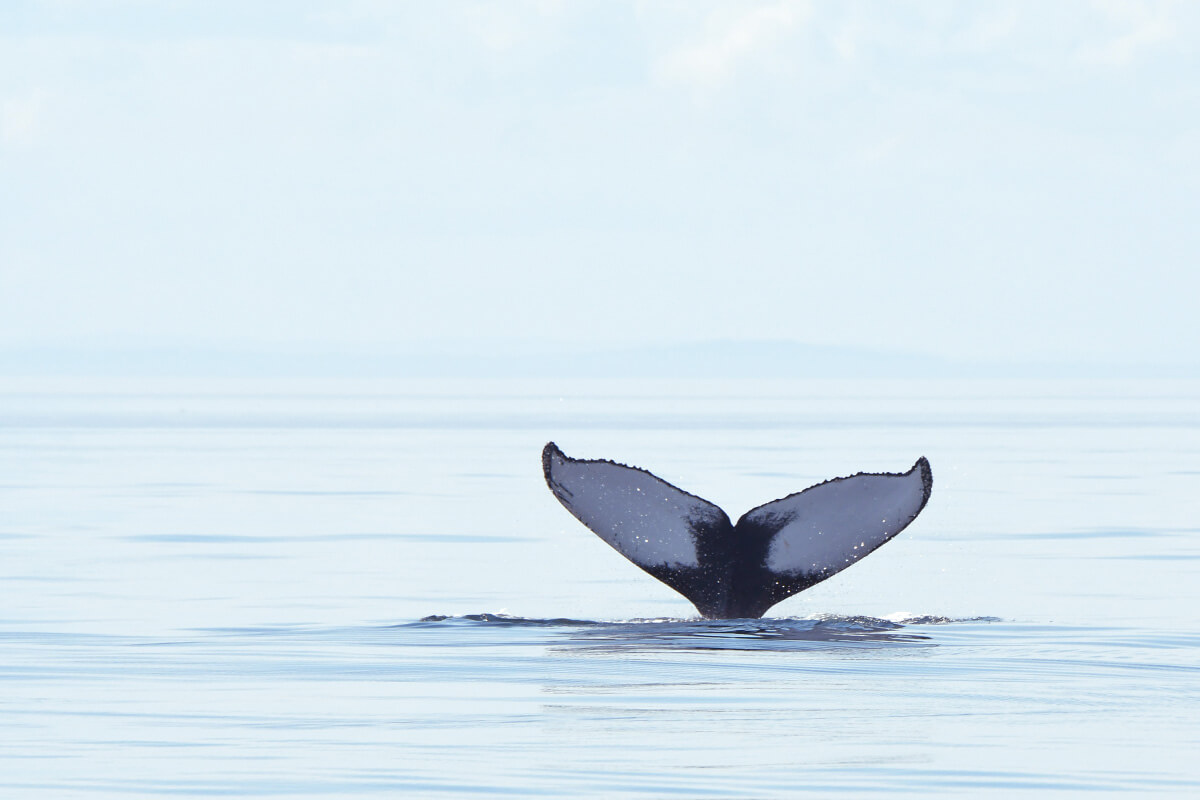Whale and seal sightings are scarce these days. Over the course of the past week, we’ve received reports of a big blast off Godbout, belugas near Tadoussac’s Buoy K56, some fifty seals in Cap-des-Rosiers and a few others in the Mingan Archipelago. This is rather normal for February in the St. Lawrence. How about if we take advantage of the lull this week to talk about whale news elsewhere on the planet?
Blue whales in Mexico
Video footage taken off Baja California, Mexico, shows two blue whales swimming at full throttle, piercing the water surface with the top of their heads, and even the eye of the individual closest to the boat. (It is recalled that in the St. Lawrence, a distance of 400 metres must be maintained from blue whales.) At the end of the video, we even see the tip of a tail. What were these two blue whales doing? With just a nine-second video and not much context to go by, it’s difficult to say for sure, but it could be reproductive behaviour.
To gain access to a female, male blue whales sometimes perform an impressive race where they swim at top speed, collide, or synchronize their moves. In a study published in the scientific journal Marine Mammal Science in September 2019, scientists noted particular calls known as “D calls” that are associated with these races involving both males and females. If a hydrophone had been submerged underwater, perhaps we would have a better idea as to what made these two whales swim so fast.
Stranded pilot whales in New Zealand
Pilot whales have the unfortunate habit of beaching themselves. On February 22, 49 individuals were found stranded on a secluded beach in Farewell Spit, New Zealand. While here in the St. Lawrence, live strandings are relatively rare and mainly involve single individuals, such events are regular occurrences in other parts of the world. Farewell Spit has previously seen strandings of over 600 pilot whales.
Pilot whales are also present in the St. Lawrence, especially in the Gulf sector. In 1930, 27 pilot whales were found beached east of Trois-Pistoles. This cetacean belongs to the dolphin family, which also includes the Atlantic white-sided dolphin and the killer whale. Highly gregarious, pilot whales can be observed in herds numbering in the thousands, but are more often seen in groups of 20 to 150 individuals. Like killer whales, pilot whales tend to stay with their mothers throughout their lives, forming small family units that can come together at different times and for activities. The strength of social bonds is one of the hypotheses that has been put forward to explain these mass strandings. It is for this reason that the species is called the “pilot whale”, for the belief that when one individual runs aground, its peers will follow. But many other theories also exist.
Back to the incident. In an attempt to save as many animals as possible, a large mobilization got under way, bringing together experts from the rescue organization Project Jonah, the New Zealand Department of Conservation and some 200 volunteers. For two days, they took turns trying to lead the whales back into the water and prevent them from beaching themselves again. One individual was even taken out to sea using a floating pontoon towed by a boat, in the hope that it would summon its fellow pilot whales to join it far from shore. Will it work? Stay tuned!
First humpback in Guadeloupe
Off the coast of Guadeloupe, the first songs of a male humpback were recorded on February 16. In this species, songs are produced mainly by bulls during the breeding season. Is it to show their dominance with respect to other males? To seduce a female? A bit of both? We cannot say. But what we do know is that “singing” is actually a repetition of sounds that vary and complement each other, forming a “song” lasting anywhere from 5 to 20 minutes. The males in a group are believed to all sing the same song, and when one individual changes tune, the others follow suit.
Turn up the volume to listen to 421, a male that has become familiar to the research teams of Ommag Guadeloupe and Cétacés Caraïbes.
Have you seen a whale or a seal in the St. Lawrence? Don’t hesitate to write me! Your whale story will contribute to next week’s column.





